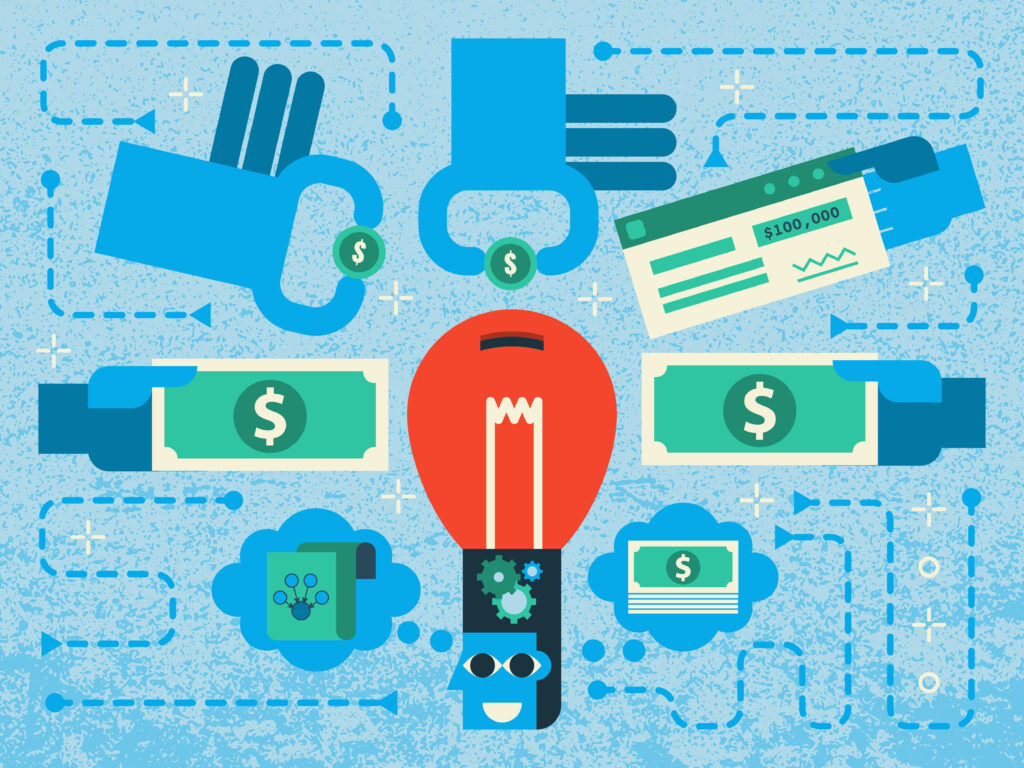Switching to SaaS isn’t just a tech upgrade—it’s a financial game-changer. Imagine slashing your IT budget in half while boosting productivity. Sounds too good to be true? By embracing SaaS solutions, companies can say goodbye to hefty hardware costs, endless maintenance, and costly upgrades. Instead, they gain access to scalable, cutting-edge software that evolves with their needs. Ready to make the switch?
What is the Traditional IT Cost Structure?
The traditional IT cost structure typically revolves around hardware, software, personnel, and maintenance. It typically includes:
- Hardware expenses: Servers, networking equipment, computers, and other physical infrastructure.
- Software licensing: Upfront costs for purchasing software licenses and ongoing fees for updates.
- Maintenance and upgrades: Regular hardware replacement, software updates, and system maintenance.
- IT staff and training: Salaries for in-house IT personnel and costs associated with keeping their skills current.
- Data center costs: Expenses related to housing and powering on-premises servers and equipment.
- Security measures: Investments in firewalls, antivirus software, and other security infrastructure.
- Downtime and recovery: Costs associated with system failures and data recovery efforts.
This structure often involves significant upfront capital expenditures and ongoing operational costs, which can be substantial for many organizations.
Switching to SaaS: The Strategic Advantage
SaaS cost-effectiveness stems from its subscription model. Companies access software and outsource IT infrastructure to third-party vendors, eliminating the need to purchase software licenses. Users pay only for what they use and can easily end contracts, avoiding large upfront costs. The recurring fees for SaaS are typically much lower than the initial expenses of traditional software, making it a more flexible and economical option for many businesses.
How does the SaaS pricing model work?
SaaS typically follows a subscription-based pricing model. Customers pay a recurring fee (monthly or annually) to access the software application.
Common pricing models within SaaS:
- Per user: Cost based on the number of users accessing the software.
- Tiered pricing: Different pricing plans with varying features and limits.
- Usage-based: Cost determined by the amount of service consumed.
- Freemium: Basic features are free, with premium features requiring a subscription.
Learn Popular SaaS Pricing Models in this detailed guide!
Switching to SaaS: Direct and Indirect Cost Savings
Direct Cost Savings
Direct cost savings from switching to SaaS are typically tangible and quantifiable. They often relate to the elimination of upfront investments and ongoing maintenance expenses associated with traditional on-premise software.
- Reduced hardware and infrastructure costs: No need for servers, storage, or data centers.
- Lower IT staffing costs: Fewer IT professionals needed for installation and maintenance.
- Elimination of software licensing costs: Subscription-based pricing usually has lower upfront costs.
- Reduced energy consumption: Cloud infrastructure is often more energy-efficient.
Indirect Cost Savings
Indirect cost savings from SaaS are less obvious but can significantly impact an organization’s bottom line. They often stem from increased efficiency, improved productivity, and enhanced decision-making.
- Increased productivity: User-friendly, accessible SaaS applications enhance employee efficiency.
- Improved collaboration: Real-time features boost teamwork and productivity.
- Faster time-to-market: Quick deployment enables faster market reactions.
- Reduced risk of data loss: Robust backup and disaster recovery plans from providers.
- Access to latest features: Regular updates keep applications current with the latest technology.

What are the Hidden Costs of Traditional Software that SaaS Eliminates?
SaaS (Software as a Service) offers several cost-saving advantages compared to traditional on-premise software solutions. Let’s break down the key areas:
Reduced Capital Expenditures (CAPEX)
- No upfront costs for hardware, software licenses, and infrastructure
- Elimination of server and storage device purchases
Lower Operational Expenditures (OPEX)
- Reduced IT staff needs
- Lower energy consumption
- Predictable subscription-based costs
This shift fundamentally changes how organizations acquire, use, and manage software, leading to substantial cost reductions across various aspects of IT operations
How SaaS Can Help Businesses Lower Cost of Ownership (LCO)?
SaaS can help businesses lower the cost of ownership in several key ways:
- Reduced upfront costs: No large initial investments in hardware and software licenses; businesses pay a subscription fee.
- Lower maintenance expenses: SaaS providers handle updates, upgrades, and maintenance, reducing in-house IT needs.
- Scalability: Pay only for what you need, preventing overbuying of licenses or hardware.
- Decreased IT infrastructure: SaaS runs in the cloud, cutting costs for on-premises servers and networking equipment.
- Energy savings: Less on-site hardware means lower energy consumption.
- Automatic updates: Access the latest features without extra upgrade costs.
- Predictable budgeting: Subscription models enable accurate financial forecasting and budgeting.
These factors significantly lower the long-term total cost of ownership compared to traditional enterprise software models.
How SaaS Can Help Businesses Lower Life Cycle Costing (LCC)?
SaaS significantly reduces Life Cycle Costing (LCC) by eliminating or minimizing costs across various stages of the software lifecycle:
- Acquisition Costs:
- No upfront hardware or software purchases.
- Reduced implementation costs due to quicker deployment.
- Operational Costs:
- Lower IT staffing requirements due to cloud-based management.
- Reduced energy consumption compared to on-premise data centers.
- Predictable subscription-based pricing.
- Maintenance and Support Costs:
- Software updates and bug fixes handled by the SaaS provider.
- Reduced help desk support needs.
- Disposal Costs:
- No hardware disposal or recycling costs.
- Minimal data migration costs when switching providers.
By shifting the burden of ownership and maintenance to the SaaS provider, businesses can focus on core competencies while enjoying substantial cost savings over the entire software lifecycle.
Switching to SaaS: Long-term Financial Benefits for IT Businesses
Switching to a SaaS model offers significant long-term financial benefits for IT companies, despite initial challenges:
- Increased Company Valuation: SaaS models with recurring revenue can be valued 4-6x EBITDA, compared to 1-2x for one-time license sales.
- Predictable Revenue Streams: Monthly or annual subscriptions provide stable revenue, making forecasting and managing investor expectations easier.
- Improved Cash Flow: While initial cash flow may dip due to the shift from large upfront payments to smaller recurring ones, SaaS provides more consistent cash flow over time.
- Lower Customer Acquisition Costs: Though initial acquisition costs can be high, retaining customers is generally less expensive, improving profitability. Metrics like customer lifetime value (LTV) and LTV/CAC ratio are key.
- Scalability and Flexibility: SaaS models are highly scalable, allowing businesses to grow their customer base without significant increases in infrastructure or resources.
- Continuous Product Improvement: Frequent updates and improvements are delivered without customer downloads or installations, enhancing user experience and driving higher retention.
However, transitioning to SaaS requires significant upfront investment in product development, infrastructure, and marketing, with potential short-term dips in revenue and cash flow before long-term benefits are realized.
What Data or Statistics best support the argument for SaaS Cost Savings?
Several data points and statistics highlight the cost-saving benefits of adopting SaaS:
- Total Savings from Negotiations: Customers saved $349 million through negotiations, with an average savings of 16.49% per deal, indicating significant cost reduction potential in SaaS contract management.
- Return on Investment (ROI): Average ROI for complete retainers is 7.6x, with total ROI reaching 8.4x, showcasing the financial benefits of SaaS investments.
- Wasted Expenditures: Companies waste over $135,000 annually on unused, underused, or duplicate SaaS tools, emphasizing the need for optimization to avoid unnecessary costs.
- Market Growth: The global SaaS market was valued at $186 billion in 2023 and is expected to grow, indicating increasing reliance on SaaS for operational efficiency and cost-effectiveness.
- Adoption Rates: Over 80% of businesses use at least one SaaS application, reflecting widespread acceptance and potential cost savings through shared resources and reduced infrastructure.
- Cost of Ownership: SaaS allows companies to pay only for the software they use, unlike traditional models with high upfront licensing fees, leading to lower overall costs.
- Utilization Rates: Many organizations use only about 70% of their SaaS licenses’ functions, highlighting opportunities to better maximize investment value.
These statistics illustrate how SaaS can lead to significant cost savings and improved financial performance for organizations.

10 Practices for Controlling Costs as You Move to SaaS
Transitioning to a SaaS model can offer numerous benefits, but it’s essential to manage costs effectively. Here are ten practices to help you control expenses during this shift:
- Minimize overlapping SaaS solutions: Avoid redundant costs by reducing multiple tools with similar functions.
- Establish a SaaS management policy: Ensure proper use of resources, maintain employee experience, meet business goals, and keep data secure.
- Plan for growth: Budget for increased SaaS adoption, assess data management needs, and allow for additional capabilities.
- Align licensing with usage: Evaluate user needs and purchase only necessary features.
- Organize SaaS resources: Gain visibility into all SaaS tools used to enable effective vendor management and optimize renewals.
- Implement user lifecycle management: Manage role changes, promotions, and access withdrawal for employees.
- Maintain and declutter licenses: Remove overlapping, abandoned, and underutilized apps to cut costs.
- Utilize discounts and credits: Take advantage of offers from vendors, such as multi-year subscription discounts.
- Delete unused resources: Remove unneeded cloud resources and use on-demand options and auto-scaling to optimize usage.
- Ensure visibility of your SaaS portfolio: Make informed decisions about cancellations, investments, and renewals to optimize spending.
By following these practices, you can effectively control SaaS costs while maximizing the benefits of this delivery model.
Which experts could provide valuable insights on this topic?
Consider these specific types of experts:
- Cloud Financial Management Consultants
- Specialize in optimizing cloud spending.
- Identify cost-saving measures within SaaS environments.
- Expertise in cost allocation, budgeting, and forecasting.
- SaaS Implementation Experts
- In-depth knowledge of SaaS platforms and cost structures.
- Assist in selecting cost-efficient SaaS solutions.
- Guide on optimizing SaaS usage and reducing costs.
- IT Cost Optimization Consultants
- Focus on reducing overall IT expenses.
- Identify hidden costs associated with traditional software licensing.
- Develop strategies for maximizing SaaS ROI.
- Digital transformation consultants
- Provide a holistic view of business operations and IT infrastructure.
- Assess the overall impact of SaaS on business performance and costs.
- Offer strategic guidance on digital transformation initiatives.
StaQ.ai can be your trustee in this decision-making process. As a comprehensive marketplace for top SaaS solutions, StaQ.ai offers carefully curated options across various categories, from marketing automation to CRM and project management. By leveraging StaQ Copliot, businesses can easily explore, compare, and select the ideal SaaS solutions that align with their specific requirements and preferred ownership model.




